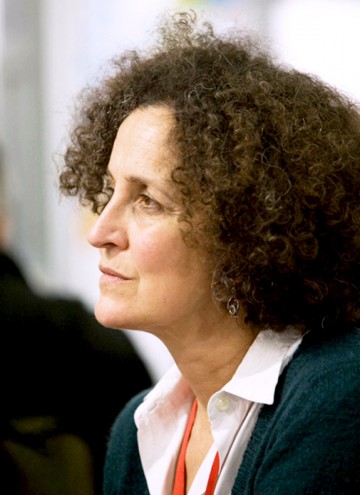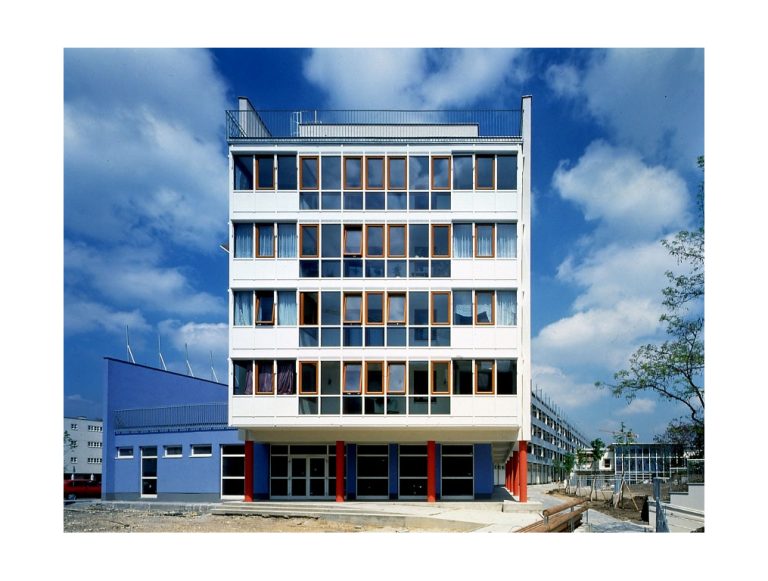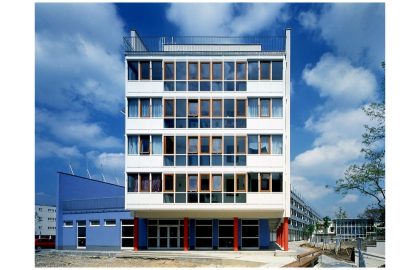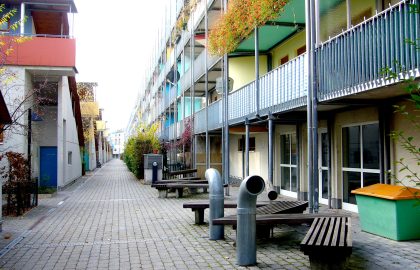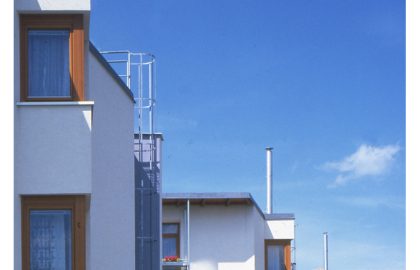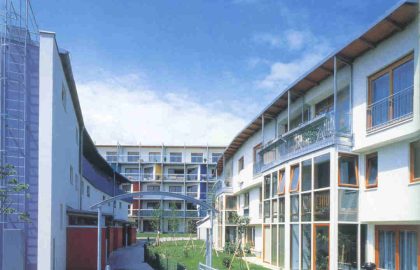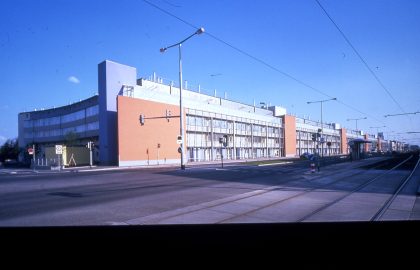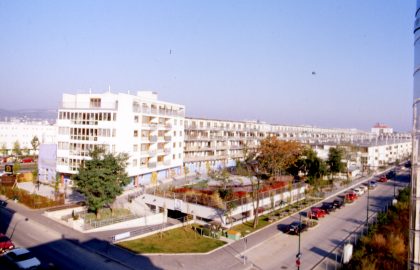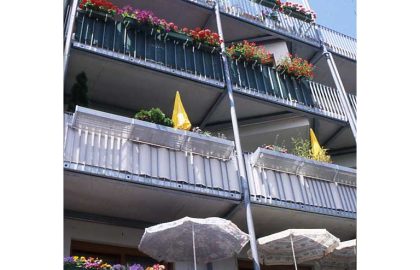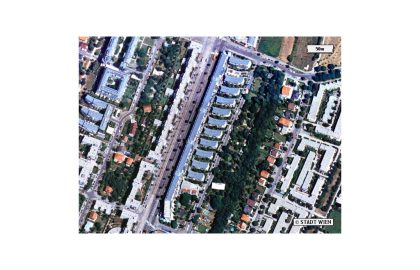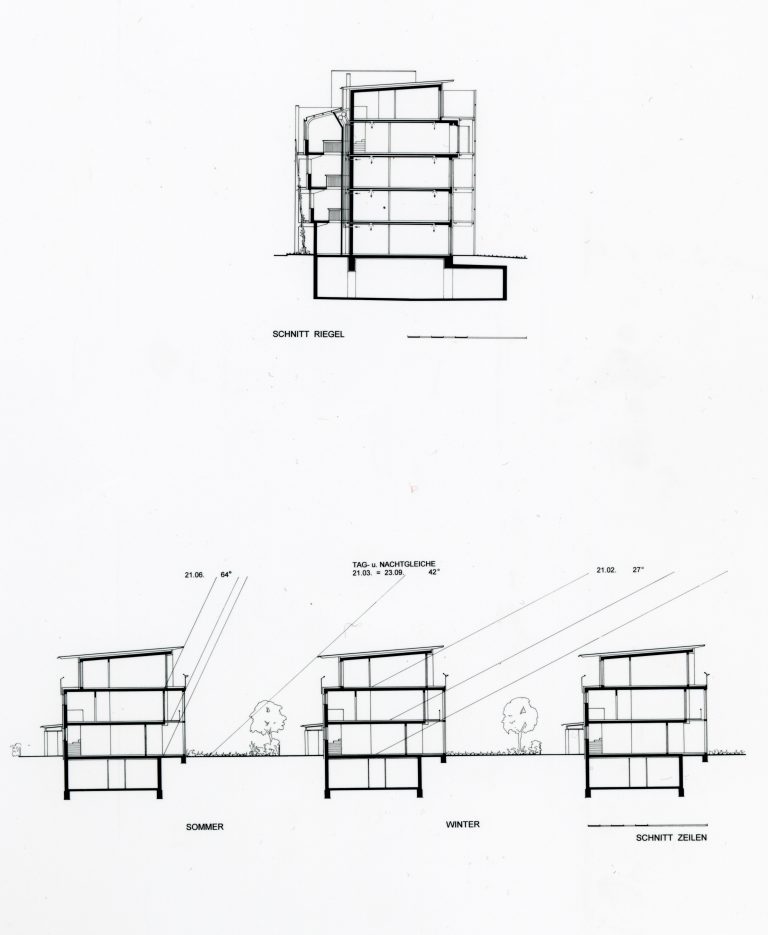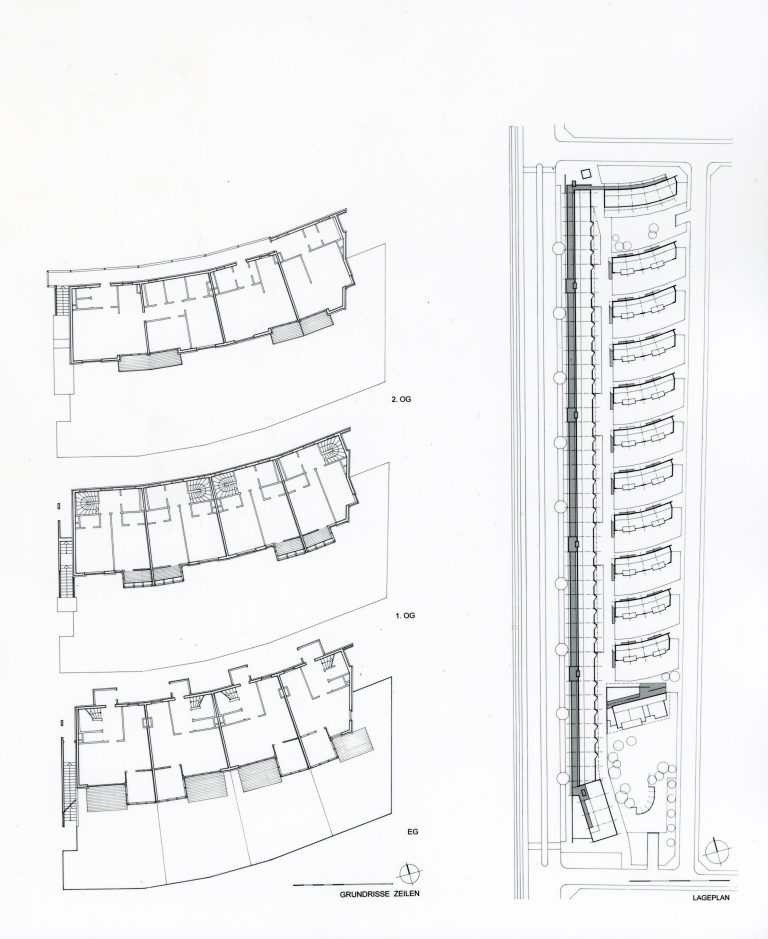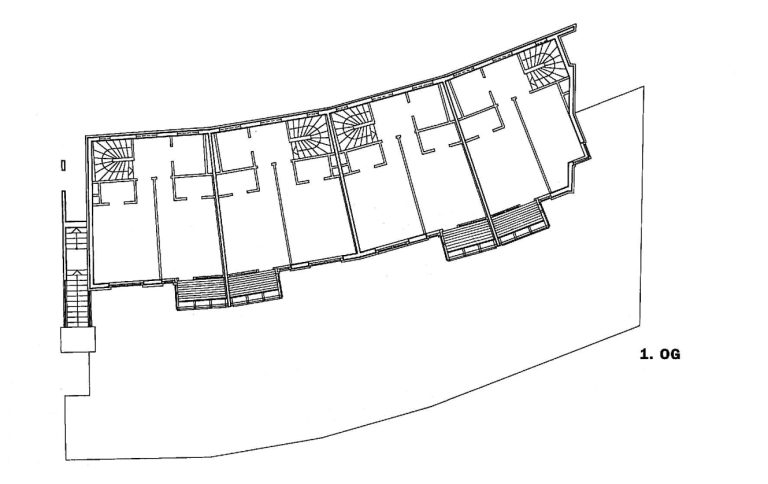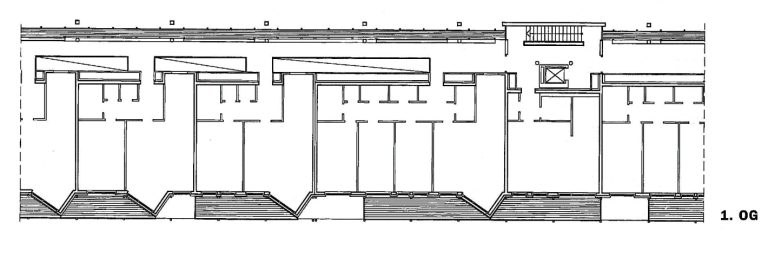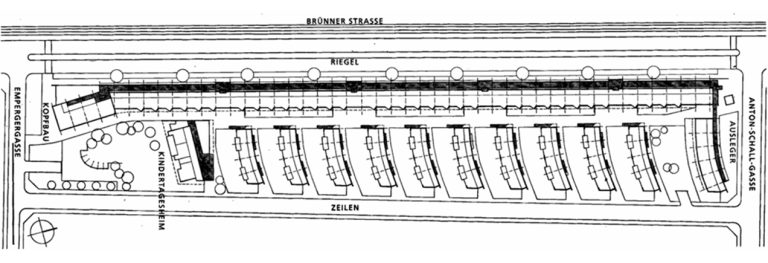The project emerged as the winning entry in an invited competition in 1991. The residential complex is designed as a low-energy settlement. It consists of a combination of optimally oriented buildings with high thermal insulation, buffer spaces, winter gardens, sun windows, and sophisticated building technology which includes a ventilation system with heat recovery and preheating of fresh air. The over 300-meter-long, narrow plot is located on the heavily trafficked Brünner Straße and is part of an urban expansion area with approximately 3000 residential units. A continuous, five-story building block was planned along this street. At the northern end of this block, there is a so-called “outlier.” On the other hand, a six-story building, extending from the alignment of the block, marks the beginning of the residential complex. To the east of the block, in a noise- and wind-protected location, there are ten three-story row houses, each with four maisonette-style row house units and apartments above. These are accessible via an open walkway, as well as a daycare center. This arrangement created a protected open space within the settlement, oriented towards adjacent green areas, to which all apartments are oriented. Furthermore, the arrangement of the building blocks avoids mutual shading, despite achieving a high floor area ratio (FAR) of 2.2.
The building concept was not intended to respond with the usual orientation away from the public street (and thus the city in general) but rather to open itself to and protect from the street. The walkway zone becomes public space due to its transparency but simultaneously provides protection from undesired emissions. The presentation of the building to Brünner Straße corresponds to fast vehicular traffic, while the same building on the opposite side in the form of the loggia structure offers freedom for highly detailed individualization, which is intensively utilized.
Energy Concept
Passive solar energy utilization and high thermal insulation, along with appropriate thermal mass, are prerequisites for low energy consumption. The use of a ventilation system with heat recovery and preheating of fresh air also contributes to energy efficiency. The heating demand based on passive solar gains was determined using the computer program WEBED. According to the analysis from the program, the apartments in the block consume between 16.9 kWh/m²a and 21.6 kWh/m²a, depending on their location, while the row houses range from 27.4 kWh/m²a to 35.3 kWh/m²a. On average, this is about a quarter of the heating consumption of a comparable conventional new building.
Passive Solar Utilization
In addition, the individual buildings are designed for maximum utilization of solar energy. The ten three-story row houses are oriented to the south and equipped with winter gardens and sun windows. The shape of each row has been optimized accordingly. With a higher southern side and a lower northern side, the shallow angle of solar exposure in the winter is taken into account. This allows sunlight to reach the ground floor of the row of houses even during this cold season. To ensure sufficient shading in the summer, the south facade features stepped projections of the roof and upper floors. The winter gardens of the maisonettes are two stories high, allowing heated air to circulate and enter the rooms behind them.
The apartments in the block are oriented towards the garden and a green zone to the east. Through so-called sun bays, which extend southward from the facade line, additional sunlight is captured. Towards the street, a glazed and greened walkway zone serves as a climate buffer and sound barrier as well as a solar collector and communication space.
On the garden side, the building is preceded by a loggia structure. The beams and columns of the frame structure as well as the suspended concrete slabs are industrially prefabricated elements. The loggia construction is thermally separated from the building and the bays.
By separating the two structures – the walkway and the loggia structure – sound and thermal bridges were avoided.
The row houses consist of a 25 cm thick brick masonry with 10 cm of thermal insulation. The wall between the winter gardens and apartments is made of concrete. The wooden structure of the cold roof sits on a reinforced concrete slab. The two-story winter gardens are constructed with a wooden frame.
Building Ventilation
As a key element of energy-saving measures, a ventilation system with heat recovery and preheating of fresh air was developed. This is the first of its kind in Central Europe for social housing. Since traffic on the four-lane Brünner Straße causes significant emissions, the apartments in the block cannot be cross-ventilated. The controlled ventilation provides these units with fresh air while also reducing ventilation heat losses (by approximately 40%). To prevent noticeable drafts, the supply air is preheated by a heat recovery system. Thirty apartments are connected to a heat recovery system on the top floor. The system supplies 5,500 cubic meters of fresh air per hour and has an efficiency of 60 percent. It is designed for one air exchange per hour, but the system’s capacity can be reduced by half if needed. Fresh and exhaust air is routed through the cavities of the reinforced concrete hollow core slab (a cost-effective solution). The preheated air supply, which is passed through a heat exchanger, is introduced into the living spaces, while exhaust air is centrally extracted from wet rooms.
South of the row houses is the day care centre, which is described in more detail under A28.

